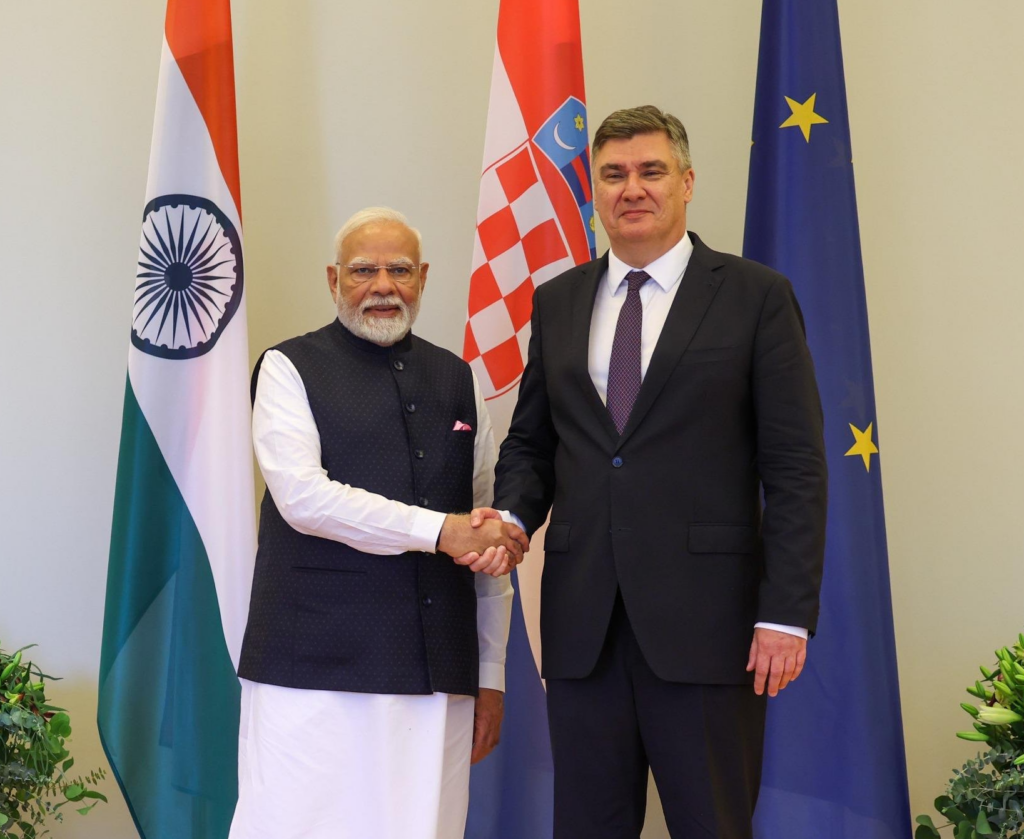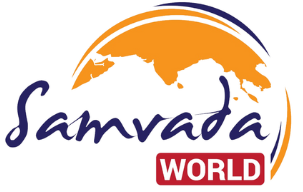Assessing the promise and pitfalls of India’s deepening partnership with an EU member state

- Zagreb has emerged as an important interlocutor for New Delhi’s EU outreach strategy.
- Despite a 2019 Memorandum of Understanding on tourism cooperation and a double-taxation avoidance agreement in force since 2015, trade is only a fraction of India’s activity with bigger European economies.
- India will have to ensure that its ties with Croatia, as with other NATO-aligned states, match its interests in the Indo-Pacific and that its European relationships don’t get in the way of such maritime priorities.
- With the Adriatic horizon at odds with New Delhi’s historic neighbourhood, the message of this visit will resonate in its European schema.
Prime Minister Narendra Modi’s trip to Croatia in June 2025 is a conscious Indian effort to expand its diplomatic footprint in Central Europe. The trip was the concluding leg of a three-nation tour after the G7 summit in Canada, and it underlined India’s desire to widen the net of its partners beyond its traditional areas of interest. But hidden beneath carefully orchestrated photo-ops and exchanges of culture exists a more sophisticated interweave of interests, economic imperatives, strategic alignments, and soft-power projection that deserves close analysis.
Reaffirming a European Foothold
India and Croatia established diplomatic relations in 1993, but their engagement has been lukewarm. Zagreb as a pivot. In recent years, as Croatia has increasingly framed itself in the context of the European Union, Zagreb has emerged as an important interlocutor for New Delhi’s EU outreach strategy. Modi, speaking in a Berlin press conference with Croatian Prime Minister Andrej Plenković, said solutions to global problems cannot be found on the battlefield, and that dialogue is the only way forward, a message that, if genuine, resonates in both South Asia and Europe. This rhetoric reflects India’s aspirations to present itself as a responsible actor on the world stage, but it also raises questions about New Delhi’s regional security stance.
Trade and Investment: Incremental Gains, Untapped Potential
Two-way trade between India and Croatia touched around USD338m in 2023, slightly more than USD514m from 2022, as the trade relationship entered an eventful but erratic rather than growing phase. EU’s pharmaceutical, textiles and engineering products are competitive in the Indian market, leaving India’s exports staring at a stiff competition, and Croatia’s plastic machinery, wood products and specialised instruments have also found their niche market in India, albeit a small one. Despite a 2019 Memorandum of Understanding on tourism cooperation and a double-taxation avoidance agreement in force since 2015, trade is only a fraction of India’s activity with bigger European economies. To go beyond symbolism, the two sides will have to address non-tariff barriers, streamline certification processes and incentivise joint ventures in high-growth areas like renewables, digital services and advanced manufacturing.
Defence and Maritime Collaboration
The 2023 defence cooperation MoU was meant to establish a mechanism of India’s Ministry of Defence and its Croatian counterpart, involving possible joint research and market access. Croatia, of course, having an extensive Adriatic sea board and a growing shipbuilding industry, India’s interest in coastal security and port infrastructure is natural. But without tangible follow-through, such as port calls, joint exercises or technology transfers, the naval plank runs the risk of sounding like nothing more than what India’s defence community specialises in – the hyperbole of strategic depth. India will have to ensure that its ties with Croatia, as with other NATO-aligned states, match its interests in the Indo-Pacific and that its European relationships don’t get in the way of such maritime priorities.
Culture, Diaspora, and Digital Diplomacy
Soft power was at the core of the Zagreb visit: from the presentation of Warli art and a brass Bodhi tree to cultural performances showcasing India’s heritage, to the launch of ICCR Chairs for Hindi and Sanskrit at the University of Zagreb. The Indian diaspora in Croatia, though small, is a strong bridge in people-to-people links. But beyond the pageantry, India’s capacity to maintain cultural engagement will depend on educational exchanges, scholarships and high-profile events that will appeal to Croatian audiences. Digital efforts such as the India-Croatia Startup Bridge and its 50-day challenge have produced promising matches between innovators from both sides, but to replicate and scale these successes, they require access to finance and a more defined path to commercialisation.
A Call for a Calibrated Approach
Modi’s stayover in Croatia succeeded in its immediate mission: to show India’s readiness to build multi-polar European relationships. But for the partnership to grow, both sides must evolve from the pageantry of agreements to concrete results. That includes quantifiable targets for expanding trade ties, creating joint working groups on defence projects, and providing resources for ongoing cultural cooperation and educational exchanges. Ironically, India needs to demonstrate how its engagement with the EU not only serves to bolster its fundamental interests, including in the Indo-Pacific, climate change and multilateralism more broadly, but is not frittering away bandwidth in too many directions at once.
As a rising India negotiates an ever more fractious world, its ties with Croatia are a combination of promise and peril. With the Adriatic horizon at odds with New Delhi’s historic neighbourhood, the message of this visit will resonate in its European schema. If diplomacy is to be judged by actions as well as words, Modi’s Croatia chapter will be less about screws and selfies, and more about follow-through that can turn goodwill into real partnership.
References:
- Ministry of External Affairs. (2025, June). India–Croatia Bilateral Relations [Official government document]. Government of India.
- Ministry of External Affairs. (2025, June 18). Transcript of Special Briefing by MEA on Prime Minister’s Visit to Croatia, June 18, 2025. Government of India.
- Press Information Bureau. (2025, June 18). India–Croatia Leaders’ Statement. Government of India.
- The Economic Times. (2025, June 18). Solutions to problems can’t come from battlefields; dialogue & diplomacy are the only way: PM Modi in Croatia.
- The Times of India. (2025, June 18). PM in Croatia: No solutions from the battlefield.
- The Times of India. (2025, June 19). From Brass Bodhi Tree to Warli art: What PM Modi gifted to world leaders during his 3-nation tour.
Shashank is a Master’s student in Diplomacy, Law, and Business at O.P. Jindal Global University. He is also a researcher and coordinator at the Center for Global South and the Center for Southeast Asian Studies. His research interests include Southeast Asia, Chinese foreign policy, India’s Act East Policy, and global security dynamics. Views expressed are the author’s own.
